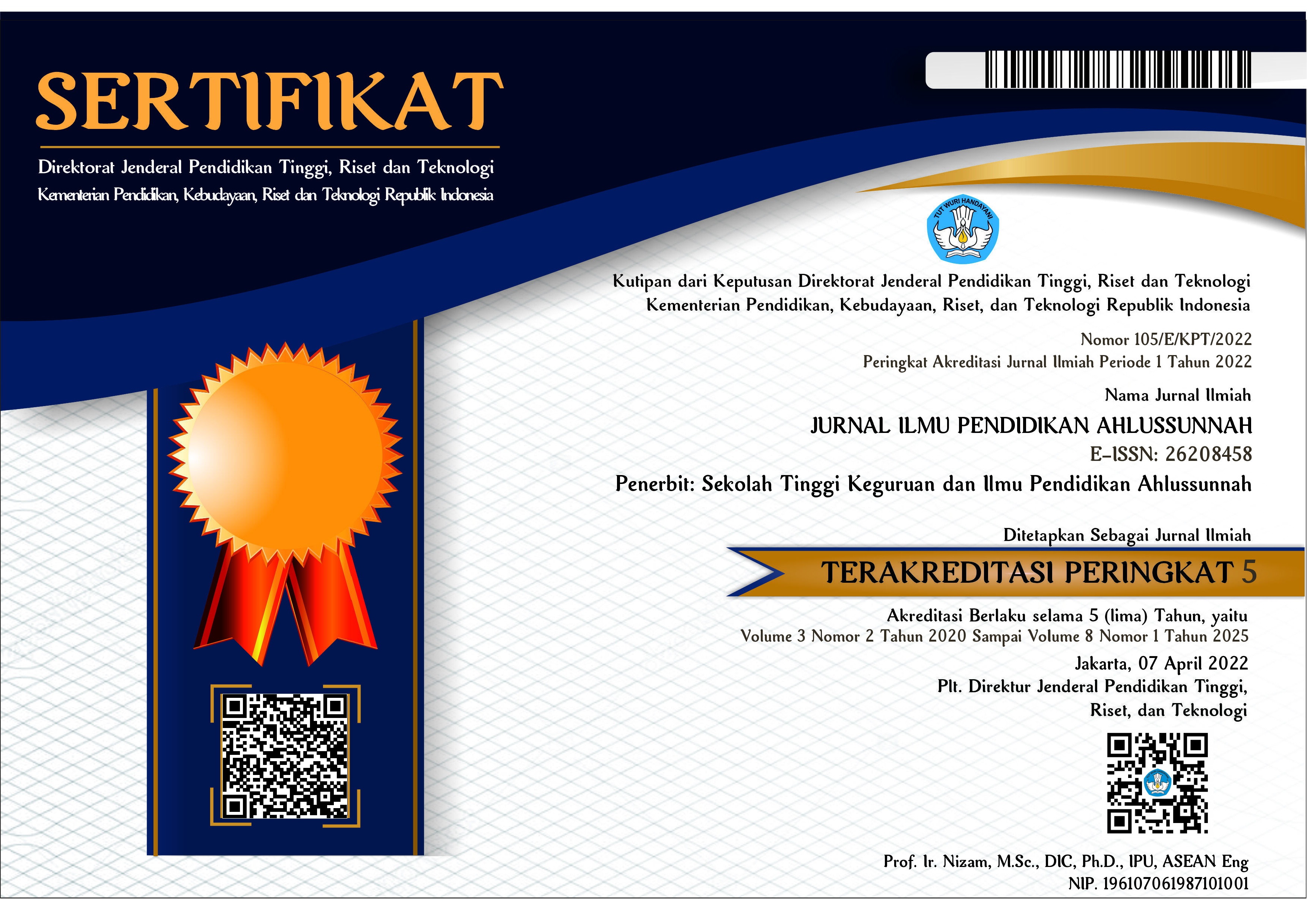THE NGALU KEMENAKAN TRADITION IN THE FORM OF SOLIDARITY VALUES IN THE COMMUNITY OF KOTO DIAN VILLAGE HAMPARAN RAWANG DISTRICT
TRADISI NGALU KEMENAKAN DALAM MEMBENTUK NILAI-NILAI SOLIDARITAS PADA MASYARAKAT DESA KOTO DIAN KECAMATAN HAMPARAN RAWANG
Abstract
The Ngalu Kemenakan tradition is a tradition that is carried out on the first child of a male tuo child. This tradition is carried out with several processes determined by the customs of Koto Dian Village, Hamparan Rawang District. This study uses a descriptive qualitative method where data is collected by observation, interviews and documentation studies. Data analysis used in this study is ethnographic analysis from Clifford Geertz, data hermeneutics, interpreting data, and interpretatively represented. The results of this study reveal that the Ngalu Kemenakan Tradition contains values of brotherhood and solidarity, social values and mutual cooperation values. The Ngalu Kemenakan tradition still exists and is carried out by the people of Koto Dian Village because it has a symbolic meaning for the community. The meaning of the symbol of money for welfare, the meaning of the symbol of the first child in the form of the datiu's appreciation for his brother's first child after he was married and the meaning of the symbol of the roll of money wrapped around the datiu who gathers with friendship bonds. For the meaning of activity in the Ngalu Nephew Tradition, it can be seen in the activity of draping a necklace of money around the nephew's neck showing togetherness and family cohesiveness, eating together as a form of family gratitude during the Ngalu Nephew tradition and reading prayers as the closing of the series of events and thanks to God Almighty.
References
Geertz, C., & Budi Hardiman, F. (1992). Tafsir kebudayaan.pdf. Kanisius.
Muzadi, M. M., Sudarto, S., Alim, M. F., & Setiono, M. A. (2021). Eksistensi Tradisi Syawalan di Desa Bungo, Kecamatan Wedung, Kabupaten Demak. Anthropos: Jurnal Antropologi Sosial Dan Budaya (Journal of Social and Cultural Anthropology), 7(1), 106. https://doi.org/10.24114/antro.v7i1.24737
Nurhapitudin, I. (2017). PENGGUNAAN KOSA KATA BAHASA DAERAH DALAM KOMUNIKASI BERBAHASA INDONESIA SEBAGAI BAHASA TUTURAN Drs. Irman Nurhapitudin, M.Hum NIP. 196304141995031001. Jurnal Al-Tsaqafa, 14, 265–274.
Nuwa. (2020). Lokal genius po’o maumere-lio. IKIP Muhammadiyah Maumere.
Ramadani, Y. (2015). NILAI BUDAYA DALAM TRADISI BAPENTEH PADA MASYARAKAT HIANG, KECAMATAN SITINJAU LAUT, KABUPATEN KERINCI. Jurnal Sosial Dan Humaniora.
Ramadani, Y., Negeri, U., & Indonesia, P. (2020). Fikri : Jurnal Kajian Agama , Sosial dan Budaya RITUAL TAREI ASYEIK PADA MASYARAKAT KELURAHAN PONDOK. 5, 1–20.
Ramadani, Y., & Qommaneeci, A. (2018). Pengaruh Pelaksanaan Kenduri Sko (Pesta Panen) Terhadap Perekonomian Dan Kepercayaan Masyarakat Masyarakat Kerinci, Provinsi Jambi. Jurnal Antropologi: Isu-Isu Sosial Budaya, 20(1), 71. https://doi.org/10.25077/jantro.v20.n1.p71-83.2018
Supardan, D. (2008). Pengantar Ilmu Sosial : sebuah kajian pendekatan struktural. Bumi Aksara.
Yajna, B. (2020). ABSTRAK Tradisi. 09(01), 70–77.
Zambeta. (2014). Education and Social Solidarity in times of Crisis: the case of voluntary shadow education in Greece.
















